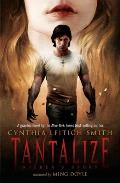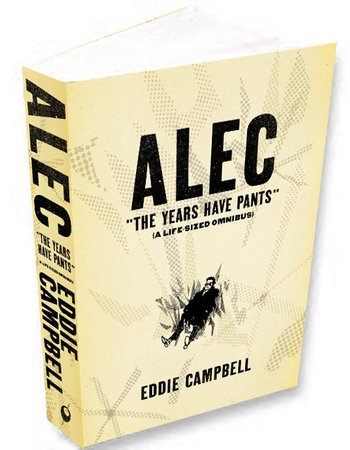A week ago, I accompanied Godson and Godson’s Brother, both nearly ten and a half, and
their father to
Batman Live at the O2 Arena in London. I can report that the show is a bombastic, highly amplified spectacle well tailored to an audience of older children. It’s also a more than adequate representation of Dick Grayson’s journey from orphaned circus performer to half of the Dynamic Duo.
My favorite moment: When
Alfred presents Dick with his revamped costume for his new role as the crime-fighter…Circus Lad! (No? How about…the Carnival Kid!) Though this Alfred has the same snarky lines as in all other post-
Dark Knight Returns portrayals, he’s also the biggest enabler I’ve seen,
encouraging Dick to become a vigilante.
Godson’s favorite moment: When Robin makes jokes. I’m not sure whether we saw
Kamran Darabi-Ford or
Michael Pickering in that role; as with the title character, two actors alternate performances. The job calls for athleticism, an American accent (hearing
interviews with the actors is a hoot because their regular accents aren’t just English, but “regional” forms), and good projection, but it doesn’t ask for subtlety.
Godson’s Brother’s favorite moment: When Robin beats up the Joker at the end. That moment was also one of the three that got the most applause from the crowd. Ordinarily the Joker plays little to no role in Robin’s origin, but this production has twin aims:
- to retell that chapter in the Batman saga, along with a little of the Caped Crusader’s own origin.
- to bring on most of the top Batman villains: the Joker and Harley Quinn, Catwoman, the Riddler, the Penguin, Two-Face, Poison Ivy, and the Scarecrow.
(Godson and Godson’s Brother pointed out that Clayface did not make an appearance. After discussion, we agreed that it would be hard to portray infinitely malleable shape-shifting on stage. Advance publicity still on the website suggests that the Ventriloquist was also once in the lineup; I suspect he proved underwhelming at the arena scale.)
To connect Tony Zucco murdering Dick’s parents to the more famous Batman villains, this show has Zucco working for the Joker, who wants to take over Haly’s Circus. (Saving costs, there’s no Mr. Haly; Dick’s father runs the circus, and the same actor also plays Joe Chill and the Riddler.) Later the Joker takes over Arkham Asylum, opening the door to additional villains. Thus, when Dick goes after the Clown Prince of Crime, it’s personal—even if the Joker has forgotten who John and Mary Grayson were.
Another of the three applause moments was when Bruce Wayne told Dick, “I’m Batman.” I couldn’t tell whether the audience wanted to reward this emotional opening-up, or simply recognized a catch phrase.
And the third moment? That came in the middle of the second act, after the production had to shut down because of a technical problem. Bruce had gotten into the new-fangled Batmobile, ready to roar away. And then nothing happened. Alfred and Dick walked off. An announcer apologized. For five to ten minutes, technicians worked in the dark, and then the scene restarted—to a most enthusiastic ovation.
This time the Batmobile slid all the way onto center stage at the start, showing us what we’d missed. However, when Bruce hit a button that had set off fireworks before, nothing happened—they hadn’t been recharged. That didn’t stop Bruce and Dick from ducking, however. At the end of the scene, the car zoomed off as intended, “afterburner” spewing vapor.
It turned out that occasional Batman scripter
Paul Dini was at the same performance in the O2. (Curiously, I didn’t see him there.) Yesterday on Twitter he pointed out that the
Batmobile had lost its wheel and the Joker got away.
That technical delay naturally made me think of the notorious
Spider-Man: Turn Off the Dark on Broadway. In newspaper interviews, the
Batman Live creators have been eager to point out that they did
not produce a musical. Nevertheless, the show has a couple of musical numbers, with athletic dance by the chorus but no singing.
Furthermore, both shows use sets to represent the rooftop panoramas of the city, and lots of swinging on wires. Both take much of their look direct from the comics, playing on the aesthetics of panels.
Batman Live may turn out to be more successful, critically and financially, simply because it doesn’t aspire to the status of high art.
Instead,
Batman Live seems designed to recall screen versions of the story that its target audience already knows. Its overall milieu seems based in the animated television series of the 1990s. The padded musculature of the heroes’ costumes comes from the Tim Burton/Joel Schumacher movies. One sequence displayed by the giant bat-shaped video backdrop unabashedly mimics a videogame.
That backdrop means there’s plenty to see, especially for people seated (as we were) at the front of the stage. A particularly striking scenic effect is the giant dinner table at Wayne Manor, which becomes a raked stage in itself. In fact, the more stylized the set-pieces, the more impressive they often were; the Graysons’ circus performance left me disappointed, but their slow-motion death was visually moving.
What does the show lack? We never see any detective work. Instead, the Joker keeps trying to get Batman’s attention, thus driving the action from one scene to the next. Mark Frost was good in that role, though I thought Poppy Tierney’s performance as Harley Quinn stole the show. (She also fills the smaller role of Mary Grayson. And—
calling Dr. Freud!—Emma Clifford plays both Martha Wayne and Catwoman.)

































